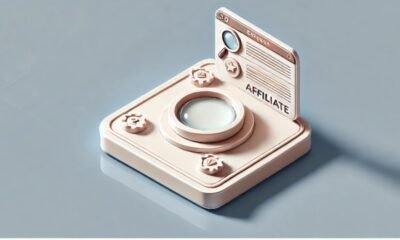Tech
How to Design Custom PCBs Fast: A Simple Step-by-Step Guide

Custom PCB design is not that complicated. When I first started, I would waste a lot of time jumping into layouts without understanding the basics. Over time, I have come to realize that designing fast means working in an organized manner without rushing. It means making the right decisions up front and not repeating unnecessary work. In this guide, I will walk you through step-by-step how to design a quality custom PCB quickly without compromising.
Understand the requirements in advance
My first and biggest mistake was opening the software and starting to design without fully understanding what the board needed. This would slow me down a lot later. Now I always start with a simple question: What is the purpose of this board?
I write down the following things: power requirements, inputs and outputs, sensors, microcontrollers, communication modules, board size limitations.
If the device is small, I write down the maximum dimensions. If it requires more current, I think about trace width and thermal management in advance. I often draw a rough block diagram on paper. It helps me understand how everything will fit together. This 5-minute habit saves me from hours of redesigning later.
Choose the right PCB design software
PCB design can be done in any software, but the right software can speed things up. I prefer tools with a simple interface and good library support. For example: KiCad is free and powerful. Altium is simple and efficient for complex projects. EasyEDA is easy for rapid prototyping, integrated with JLCPCB.
The key to fast design is to know the software well. Keyboard shortcuts, libraries, and easy access from schematic to layout will get you there quickly.
Create a clean component library
A messy library slows down the entire design process. I once made a mistake with a footprint, which led to having to re-create the entire board. Now I make sure before using a footprint: pad size, pin number, 3D model, tolerances. Many manufacturers provide libraries in advance, which saves time. I have also created my own library, which stores frequently used components.
Organize the schematic
If the schematic is messy, it becomes difficult to layout later. I organize the main blocks first: microcontroller, power supply, connector, sensor and driver. Instead of long and complicated wires, I use net labels. This keeps the schematic clear and does not cause confusion. I write down the names and values of the components, so that it is easy to understand while laying out.
Prepare the PCB layout
I do not set design rules before starting the layout. Each manufacturer has different requirements, trace width, gap, hole size, copper clearance, etc. If you set them in advance, the software will show problems on its own. The size and shape of the board are also not fixed in advance, which is convenient when placing components.
Place components correctly
Good placement makes routing easier, bad placement makes routing more difficult. I follow the following order: Connectors first, their location is usually fixed. Then large components, voltage regulators, ICs, modules. Keep related components close together, such as crystal oscillators next to microcontrollers, filter capacitors next to regulators.
Keep analog and digital parts separate to reduce noise. Leave enough space between components so that traces can pass easily.
Routing efficiently
Routing is fun when the placement is good. I start with the important signals first: high-speed lines, differential pairs, power traces. Short, straight traces reduce noise. I use 45° angles. They look nice, and they reduce copper stress. I prefer manual routing over autorouters because I have full control. I try to keep the ground plane as intact as possible, which reduces EMI problems.
Run a Design Rule Check (DRC)
Instead of leaving the entire board to be routed, I sometimes run a DRC. It catches spacing problems, unconnected nets, or via errors early. Fixing problems early saves time later.
Final check before ordering
Before ordering a board, I double-check everything: I look at it with a Gerber file viewer, polarity markings, silkscreen text, component orientation. A wrong footprint or orientation can ruin the entire board. If possible, don’t show it to someone else because a fresh eye can catch a lot of mistakes.
Choose a fast and reliable manufacturer
Some manufacturers can deliver a board in a few days, while others take time but deliver good quality. It’s best to stick with a custom pcb manufacturing company whose work meets your expectations for speed and quality.
Speed up future designs by using templates
I save my frequently used designs as templates. For example, 5V regulator circuits, microcontroller bases, standard connector layouts. Reusing them saves time and reduces errors.
Mistakes that slow down PCB designers
Even experienced people make these mistakes: starting without a plan, using without checking the footprint, placing components too close together, skipping DRC, rushing the final review. Speed comes from experience and discipline. Creating a standard workflow will make every new project easier.
Bottom line
Designing custom PCBs quickly is not magic; it is a disciplined approach to avoid unnecessary repetition. I have found that the more organized I am at the beginning, the faster and easier the rest of the work becomes. With the right habits, the right tools, and the right mindset, anyone can design a fast, quality PCB.
-

 Tech1 year ago
Tech1 year agoHow to Use a Temporary Number for WhatsApp
-

 Business2 years ago
Business2 years agoSepatuindonesia.com | Best Online Store in Indonesia
-

 Social Media1 year ago
Social Media1 year agoThe Best Methods to Download TikTok Videos Using SnapTik
-

 Technology1 year ago
Technology1 year agoTop High Paying Affiliate Programs
-

 Tech10 months ago
Tech10 months agoUnderstanding thejavasea.me Leaks Aio-TLP: A Comprehensive Guide
-

 FOOD1 year ago
FOOD1 year agoHow to Identify Pure Desi Ghee? Ultimate Guidelines for Purchasing Authentic Ghee Online
-

 Instagram3 years ago
Instagram3 years agoFree Instagram Auto Follower Without Login
-

 Instagram3 years ago
Instagram3 years agoFree Instagram Follower Without Login




















